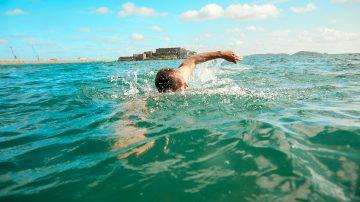Guernsey Coastguard is raising awareness among local boat owners of the dangers of carbon monoxide poisoning on their vessels, the effects of which can be fatal.
In the last 10 years, the UK’s Marine Accident Investigation Branch has recorded nine deaths caused by carbon monoxide poisoning aboard pleasure craft and recreational vessels.
The UK Government recently issued a safety message containing some simple but important measures that mariners can take. This follows an accident last year on a sports cruiser called the Emma Louise, in which the build up of exhaust gas in the boat’s covered cockpit area led to the deaths of the two men on board.
There was no carbon monoxide detector in operation and the Marine Accident Investigation Branch (MAIB) concluded that the two men would likely have fallen unconscious within 35 minutes and would have been unaware of the danger they were in.
Guernsey Coastguard is running its own safety campaign locally, highlighting what can be done to keep yourself and others safe.
Assistant Harbourmaster James Way said: “Carbon monoxide is a silent killer and there are many sources of it on boats, including engines, cookers, heaters and exhaust fumes.
“Carbon monoxide cannot be seen, smelt, tasted or felt. When you breathe in carbon monoxide, it replaces the oxygen in your blood stream, preventing essential supplies to your heart, brain and other vital organs.
“This makes it essential that carbon monoxide alarms are installed and properly maintained in areas where carbon monoxide can accumulate and pose a risk to health, such as the cabins and cockpits of motor cruisers.
“Boat users should ensure that all spaces are well-ventilated, and exhausts should be kept clear from obstructions. You should never ignore the smell of exhaust fumes in any enclosed space.”
This safety message has also been captured on social media so that Guernsey Coastguard can reach as wide an audience as possible.
Some Top Tips – How to protect yourself and your crew from the ‘Silent Killer’ – Carbon Monoxide:
- Install and maintain a marine-approved carbon monoxide alarm. Test it frequently and replace by its expiration date.
- Make sure all cabins are well ventilated – carbon monoxide can build up quickly in enclosed spaces.
- Check that exhaust outlets are clear from obstructions.
- Carbon monoxide is colourless and odourless, so stay alert for the smell of exhaust fumes or any unfamiliar burning smell when an LPG or oil appliance is on.
- Do not ignore the symptoms – headaches, dizziness, nausea, vomiting, tiredness, confusion, stomach pain and shortness of breath.
- If carbon monoxide poisoning is suspected, stop the source immediately, go outside and seek immediate medical attention.













